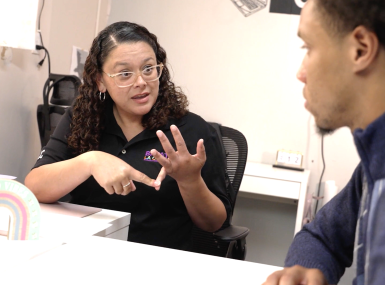U.S. Economic Development Administration (EDA): Support Essential Seed Capital/Gap Financing for Local Job Creation

Author

Eryn Hurley
Upcoming Events
Related News
ACTION NEEDED
Urge your members of Congress to increase funding for the U.S. Department of Commerce’s Economic Development Administration (EDA) in FY 2026. EDA funding is important to counties because it helps local communities achieve long-term economic growth based on local and regional priorities.
BACKGROUND
The U.S. Economic Development Administration (EDA) is the only federal agency with a mission focused solely on private sector job creation in distressed areas. EDA has achieved an impressive track record of making strategic investments and building partnerships that help regions and communities respond to shifts in international markets, address severe unemployment challenges and recover from plant closures, major natural disasters and other chronic, sudden or severe economic hardships.
At a time when the nation must make the public sector investments necessary to compete in the global economy, the flexibility, partnership structure and accountability of EDA’s programs should be at the forefront of the federal toolbox. The agency’s portfolio of economic development infrastructure, business development financing, regional innovation strategies and public-private partnerships are tailored to support the unique needs of each region.
EDA-funded projects are awarded on a competitive basis and typically require a 50 percent local match and significant private sector investment, helping to ensure projects have local support and are part of a broader regional strategy. In FY 2024/2025, EDA received $468 million in funding, $30 million under the FY 2023 appropriations level. NACo members are encouraged to contact their members of Congress to significantly increase funding for EDA in FY 2025 appropriations.
KEY TALKING POINTS
- EDA focuses solely on private sector job creation and economic growth. EDA investments promote high quality jobs, especially in advanced manufacturing, science and technology and emerging knowledge- based industries and sectors.
- EDA’s infrastructure investments are targeted at essential facilities and assets like water and wastewater systems, middle mile broadband networks, workforce training centers, business incubators, intermodal facilities and science and research parks.
- EDA’s grants are awarded on a competitive basis, based on regional comprehensive economic development strategies (CEDs), and are developed and prioritized by local communities. This helps to ensure that projects have significant local support and are part of a broader regional plan, rather than isolated, uncoordinated local projects.
- Under federal law, EDA projects typically require a 50 percent local cost share and significant private sector investment, ensuring that local leaders and businesses are committed to the project’s success.
- EDA grants are critical for county economic development. They are also particularly important for rural areas, where such economic development resources are often scarce.





